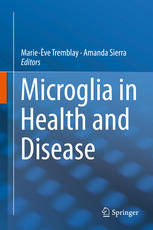

Most ebook files are in PDF format, so you can easily read them using various software such as Foxit Reader or directly on the Google Chrome browser.
Some ebook files are released by publishers in other formats such as .awz, .mobi, .epub, .fb2, etc. You may need to install specific software to read these formats on mobile/PC, such as Calibre.
Please read the tutorial at this link: https://ebookbell.com/faq
We offer FREE conversion to the popular formats you request; however, this may take some time. Therefore, right after payment, please email us, and we will try to provide the service as quickly as possible.
For some exceptional file formats or broken links (if any), please refrain from opening any disputes. Instead, email us first, and we will try to assist within a maximum of 6 hours.
EbookBell Team

5.0
70 reviewsThese past few years have witnessed a revolution in our understanding of microglia, especially since their roles in the healthy central nervous system (CNS) have started to unravel. These cells were shown to actively maintain health, in concert with neurons and other types of CNS cells, providing further insight into their involvement with diseases. Edited by two pioneers in the field, Marie-Ève Tremblay and Amanda Sierra, Microglia in health and disease aims to share with the broader scientific community some of the recent discoveries in microglia research, from a broad perspective, with a collection of 19 chapters from 52 specialists working in 11 countries across 5 continents.
To set microglia on the stage, the book begins by explaining briefly who they are, what they do in the healthy and diseased CNS, and how they can be studied. The first section describes in more details their physiological roles in the maturation, function, and plasticity of the CNS, across development, adolescence, adulthood, neuropathic pain, addiction, and aging. The second section focuses on their implication in pathological conditions impairing the quality of life: neurodevelopmental and neuropsychiatric disorders, AIDS, and multiple sclerosis; and in leading causes of death: ischemia and stroke, neurodegenerative diseases, as well as trauma and injury.